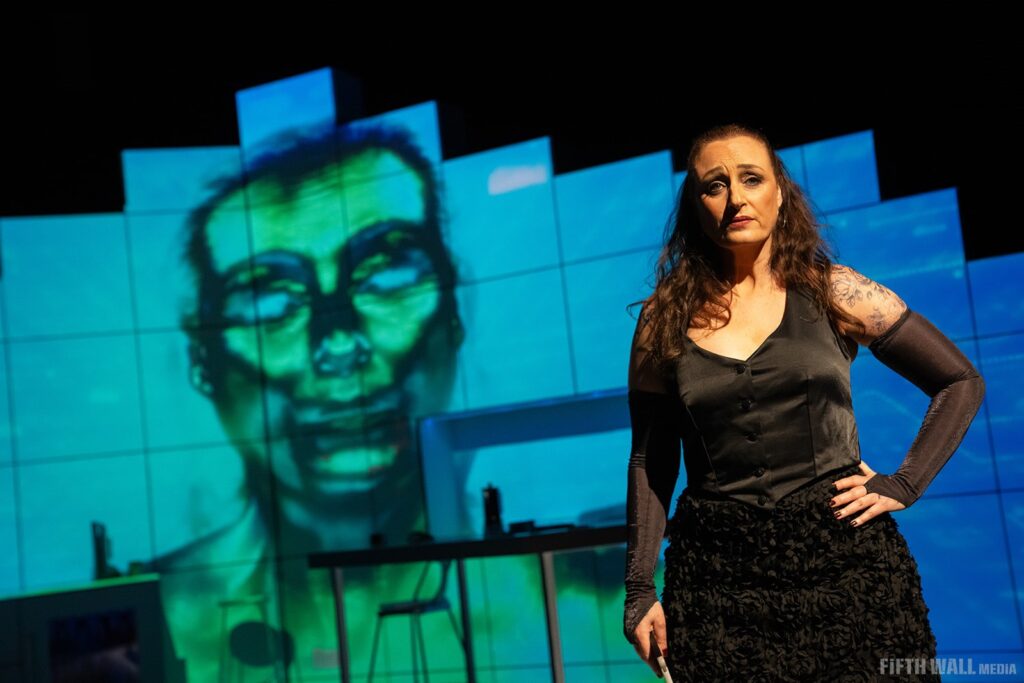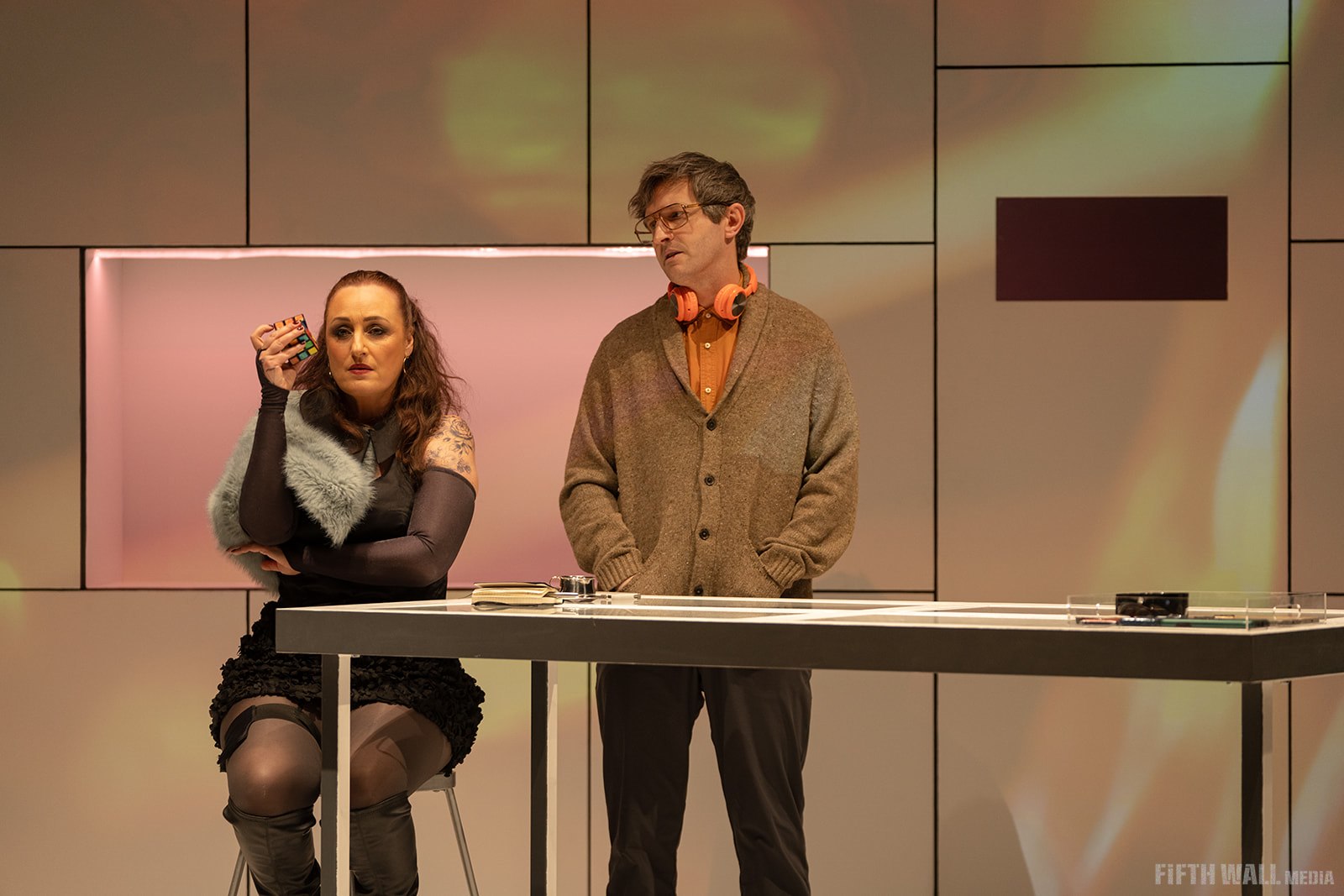The concept behind Vertigo Theatre’s newest premiere mystery is a good one. A food critic who is murdered. A famous detective who is investigating the case. Crime meets technology as her artificial intelligent colleague Isabella is at her side. These are all elements that could make a compelling mystery. But A Killing at La Cucina by Thomas Morgan Jones, a co-production with Prairie Theatre Exchange fails in conception, is filled with stereotypes and leaves the audience confused and frustrated.
The play introduces a new famous detective Lucia Dantes (Lauren Brotman) who is called in to investigate a murder at a new 5-star restaurant, FATE. The marketing premise of FATE is that you face your own fate, you might dine and live out your life, or you might die if you wind up eating the improperly prepared puffer fish. One in every thousand diners winds up dying. The restaurant is making a killing, with a year-long waitlist, and a price tag of $15K to enjoy a meal and a 40 page waiver that they have to sign. The food is euphoric and FATE toys with destiny and diners’ feelings towards their own death. What would their last words be to family and friends if this was their last meal? But now, famous food critic Richard Carlyle is dead and Lucia is there to get some answers.
The suspects are all waiting in the hallway for Lucia to call them in. There are a series of suspects who are played by Braden Griffiths. This includes Hunter, who is the guide for the experience at FATE and the most interested in Lucia and her history. Drew is the dishwasher who gives one-word answers and is reserved. Dominic the Sous Chef reveals a little more for Lucia, while Sebastian the Head Chef is a bit surly. Then you have Armand who is an investor and doesn’t want to lose money by being closed, and Prism the businessman who has ties with the dark web.
All of these characters are not hard to follow per se. John Iglesias’ costume design keeps each character distinct. But all the elements that they introduce into the storyline, such as the backstories and random facts that they mention, are jarring and confusing. It’s a mess of motives and chaos. Why is Lucia investigating at the restaurant instead of at a police station? What ensures that her suspects don’t go wandering off, other than being monitored by one single officer that we meet at the beginning? Why would she even think about eating or drinking anything prepared by the suspects? It all doesn’t make sense and relies on the audience buying into the character, as if we’ve known her for years. She’s Italian and stylish, but other than that, the audience gets no exposure to her character. Tropes like this work for fictional detectives with a body of written work behind them like Sherlock or Poirot, or a character who is alongside asking all the questions that the audience has. A Killing at La Cucina doesn’t take on the task of establishing and building trust with its audience, it automatically assumes that it has that commitment. Without trust in the storyline, it very quickly and truly falls apart. The AI aspect comes off as shallow and stereotypical. It’s all incredibly frustrating. The play would have been infinitely more successful as a complete satire.

Brotman and Griffiths are powerhouses in a flimsy narrative. Jack Grinhaus as director doesn’t seem to see the glaring flaws in the production, because the AI rendering is creepy and also not believable. Narda McCarroll’s set design is quite intriguing though, with hidden cupboards and fridges, a cubelike design that fits the style of the play. Andy Moro’s projection design took video projection and tried to create compelling AI, but it just reads as bizarre. Jaymez’s lighting design and MJ Dandeneau’s sound design and composition support the plays transitions, especially Griffiths transformation to different characters on stage.
Vertigo Theatre took a chance on A Killing at La Cucina and were unsuccessful. The play runs until April 13th. More information is available online.
Photo credit: Lauren Brotman, Braden Griffiths, Photos by Fifth Wall Media

